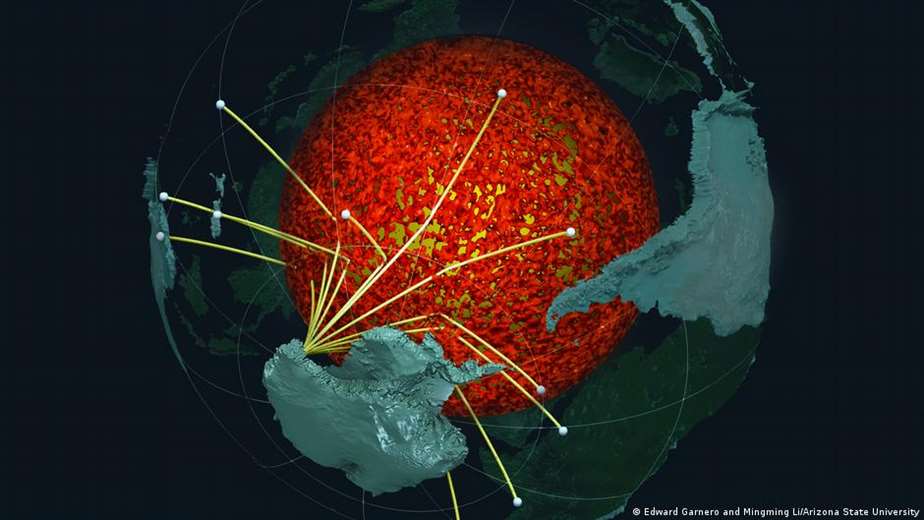
April 12, 2023, 10:50 PM
April 12, 2023, 10:50 PM
Research led by the University of Alabama has analyzed extensive seismic imaging data from Antarctica, revealing that near the planetary core there is a layer between the core and the mantle that is likely a sunken ocean floor.
Specifically, the highest-resolution map yet of the underlying geology beneath Earth’s southern hemisphere revealed that the layer, some 2,900 kilometers below the surface, is dense but thin, subsumed by the interior of the Earth. Earth for countless millions of years to get to where it now resides.
“Seismic investigations, such as ours, provide the highest-resolution images of our planet’s interior structure, and we are discovering that this structure is much more complicated than previously thought,” says geologist Samantha Hansen of the University of Alabama.
Understanding exactly what is below our feet is vital to studying volcanic eruptions and variations in Earth’s magnetic field, which shields us from solar radiation in space, among others.
“Our research provides important connections between Earth’s surface and deep structure and the overall processes that drive our planet,” Hansen added.
ultra low speed zones
The scientific team, who published their results in Science Advances, They tracked the resonant seismic waves emitted by the earthquakes, which they noted were slowing dramatically in the zone where the molten metallic outer core meets the rocky mantle above it, the core-mantle boundary also known as the CMB.
This layer of ancient ocean floor, previously seen only in isolated patches, is denser than the rest of the deep mantle, hindering the speed and slowing down seismic waves that reverberate below the surface, scientists say.
These ultra-low velocity zones are known as ULVZs, which more or less come in the form of mountains that jut out from the CMB. According to the researchers, these ULVZs are likely oceanic crust buried for millions of years.
Mountains in the core 5 times higher than Mount Everest
“By analyzing thousands of seismic recordings from Antarctica, our high-definition imaging method found fine anomalous zones of material in the CMB at all the locations we tested,” said study co-author Edward Garnero, a professor in the Antarctic School of Exploration. Earth and Space in the State of Arizona. University, in a press release.
“The thickness of the material varies from a few kilometers to tens of kilometers. This suggests that we are seeing mountains in the core, in some places up to 5 times higher than Mount Everest,” he added.
According to the researchers, these subterranean “mountains” would be far from inconsequential irregularities, as they may play an important role in how heat escapes from the core, the part of the planet that powers the magnetic field.
Also, it is likely that this material from the ancient ocean floors could become trapped in mantle plumes, or hot spots, that return to the surface through volcanic eruptions.
Edited by Felipe Espinosa Wang

















